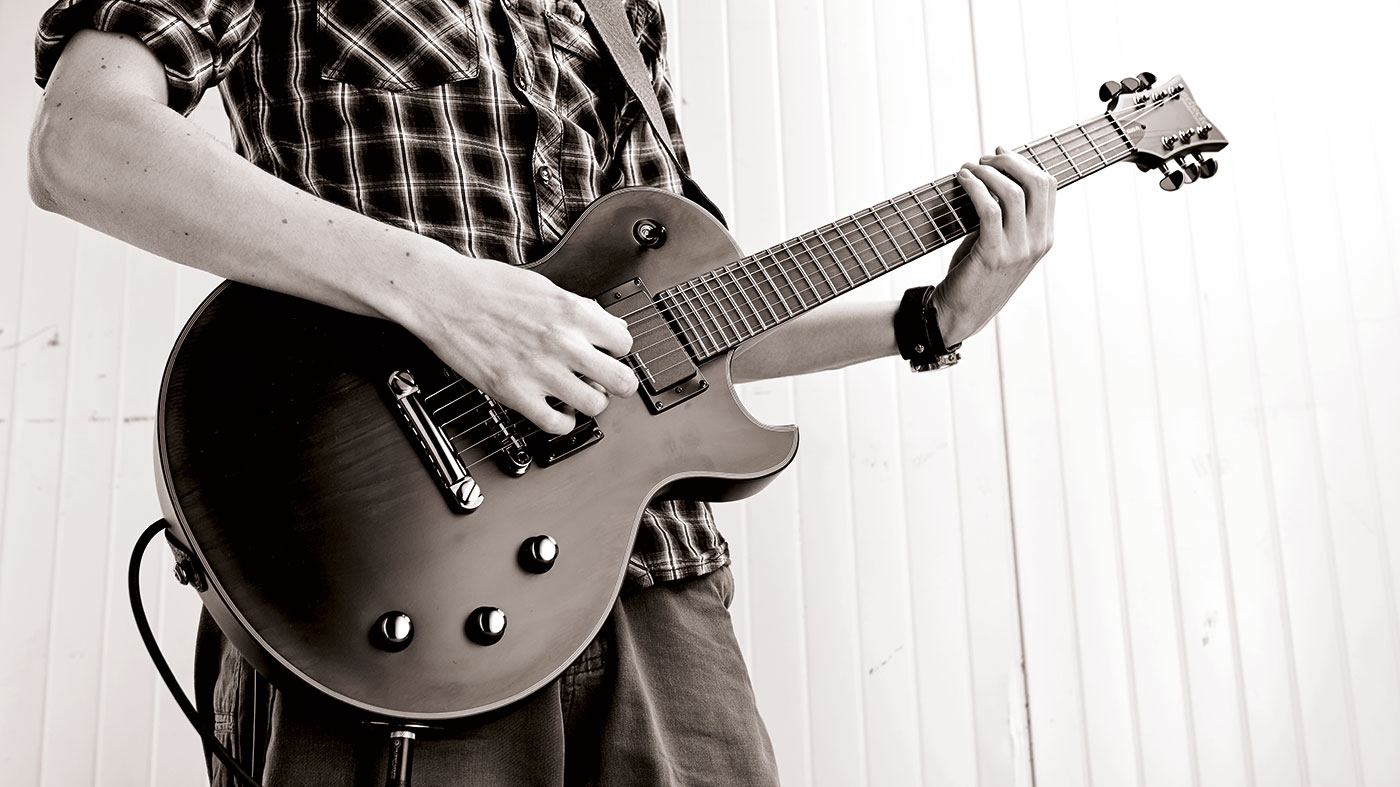Improve your guitar arpeggios in 20 minutes
Four techniques to help your playing ascend

Play creative, musical lines and learn some essential arpeggios without immersing yourself in fretboard diagrams and techniques. Learn while you burn!
Our guide to arpeggios is all about real-world guitar playing and applying some nifty, musical ideas to your jam sessions. Learning this way will help you to absorb our riffs and licks without the need for diagrams or metronomes, allowing you to be more creative when improvising.
And, though we’re not focusing on shred guitarists, that’s not to say there won’t be one or two technical challenges. We’ve instead looked to guitarists such as Mark Knopfler, David Gilmour, The Edge, Gary Moore and Misha Mansoor - who are all players that use arpeggios in creative, and, dare we say it, more musical ways!
Within each example there are, of course, important shapes to be learned. However, the really great thing about the guitar is that it’s relatively easy to extrapolate these ideas across the fretboard and into different keys.
Edge style delay
This eighth-note riff played with a ‘dotted’ eighth-note delay (at 529ms and 428ms respectively) gives you The Edge’s ambient vibe. Focus on making swift, tidy chord changes - we’ve shown the fingering next to the notes at the start of each bar. Notice how these shapes are based on open chords, just played an octave higher.
Pink Floyd inspired lead
This bluesy lick outlines A minor arpeggios throughout. First, a three-string shape, which you can play with a single down-pick (known as sweep picking) or with three individual pick strokes. Second is a minor pentatonic phrase - it’s still an arpeggio! We round things off with a bigger shape, which may take a little more practice.
Hard rock minor lick
This E minor arpeggio includes the 9th interval (an F# note) that’s a particular favourite of players like Gary Moore and Paul Gilbert. Part of the challenge here is the middle part of the arpeggio as you cross three strings - essentially you use an open Am chord shape for the last note of bar 1 and the first two notes of bar 2.
Want all the hottest music and gear news, reviews, deals, features and more, direct to your inbox? Sign up here.
Tapped arpeggio
With fret-hand mobility you can cover nearly the length of the fretboard here in this Misha Mansoor inspired tapping lick - that means using a pick-hand finger to ‘tap’ the circled notes. The fret-hand part is identical in both the 5th fret position and the 10th. Move your finger away from the 12th fret before your fret hand gets there!
Practice plan
- One minute: Play through one exercise slowly
- Two minutes: Slow down further and focus on tricky parts such as position shifts
- Two minutes: Gradually build your playing speed
- Try out the other examples
Examples 1 and 2 can easily be moved around the fretboard to other key signatures. It’s a quick way to change the sound and you might just fire off some new creative ideas too. Examples 3 and 4 include open strings, so, if you plan to transpose either lick, make sure to bear this in mind. Simply fret the relevant note if you’re moving Example 3; Example 4 works better if you move the lick onto another string. Try also tapping different notes to take the lick into new melodic territory.
Total Guitar is Europe's best-selling guitar magazine.
Every month we feature interviews with the biggest names and hottest new acts in guitar land, plus Guest Lessons from the stars.
Finally, our Rocked & Rated section is the place to go for reviews, round-ups and help setting up your guitars and gear.
Subscribe: http://bit.ly/totalguitar




